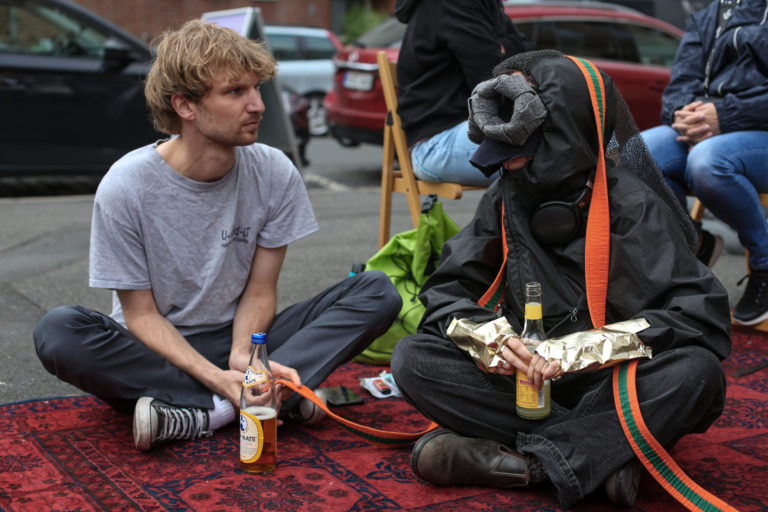Artistic research in response to multiple crises
Date: 2024
Location: Hannover, Germany
Organization: TANKE e.V., project space
Role: Initiator, curator, space design
Project Team: Sofia Baronner (curator, head of TANKE e.V.), Simon Schirmer (curator, graphic design, space design), Lucia Schoppenhorst (curator, space design), Sarah Nicola (curator, space design), Josephine Altmeyer (curator), Endric Merker (curator, IT, organization), Mel Wilken (producer, space design)
Collaborators: Stiftung Leben & Umwelt / Heinrich-Böll-Stiftung Niedersachsen
Supporters: Stadt Hannover, Region Hannover, Bezirksrat Hannover Südstadt-Bult

The year-long project ‘Home Repair’ is inspired by Richard Powers’ novel ‘The Overstory’, which addresses environmental protection and activism in multi-dimensional ways. We take up this theme and examine the challenges of living together in times of multiple crises from interdisciplinary perspectives – both in an ecological and social context. We use the term ‘Home’ as a metaphor to establish new approaches to the current societal discourse. ‘Repair’ is understood by us as a low-threshold entry into action, as self-empowerment to generate positive dynamics. The aim is to think and create positive visions through encounters with art. We seek for new perspectives through artistic research, knowledge creation through artistic practice. Beyond traditional exhibition formats, we pursue an open approach with workshops, excursions and lecture performances. We involve local partner organizations as well as public spaces. Our core questions are: What does it mean for us to live in a damaged home? What can be repaired and what can we do ourselves? How can we learn from approaches outside Western perspectives and anthropocentric worldviews?
Experimenting, exchanging and learning through artistic practice
threat threats, Suna Yoo
Colorado, Julia Mensch
Julia Mensch (based in Berlin and Buenos Aires) explores the amaranth plant as a political actor in the conflict around soybean monoculture in South America. Glyphosate, a powerful herbicide, is used in combination with resistant seeds. Monocultures are established on clear cut rainforest lands, leading to catastrophic consequences for the climate, biodiversity, peasants and indigenous communities. Amaranth, also named kiwicha or yuyo colorado withstands the toxic treatment. Its resilience has gained symbolic power that inspired political resistance. Its seeds were preserved by indigenous peoples, despite the Spanish colonizers’ prohibition. Julia Mensch calls amaranth America’s revenge, relating to the scientist and environmental activist Andrés Carrasco. Through her artistic research approach using drawings, observation and interviews, the artist explores the perspective of the plant and its active role in both local and global contexts.
Colorado (part of Amaranth. Plants as Political Agents in Colonized America) by Julia Mensch is realized within the framework of “Plants_Intelligence. Learning Like a Plant” (2022–2025), funded by the SNF and hosted by the IAGN HGK at the Basel Academy of Art and Design FHNW.
Upcomming
The series will continue soon with contributions by
Jonas Kakó (Hannover)
Franziska Klose (Leipzig)
Jessica Pavone (New York)
Vojtěch Liebl (Prag)





















